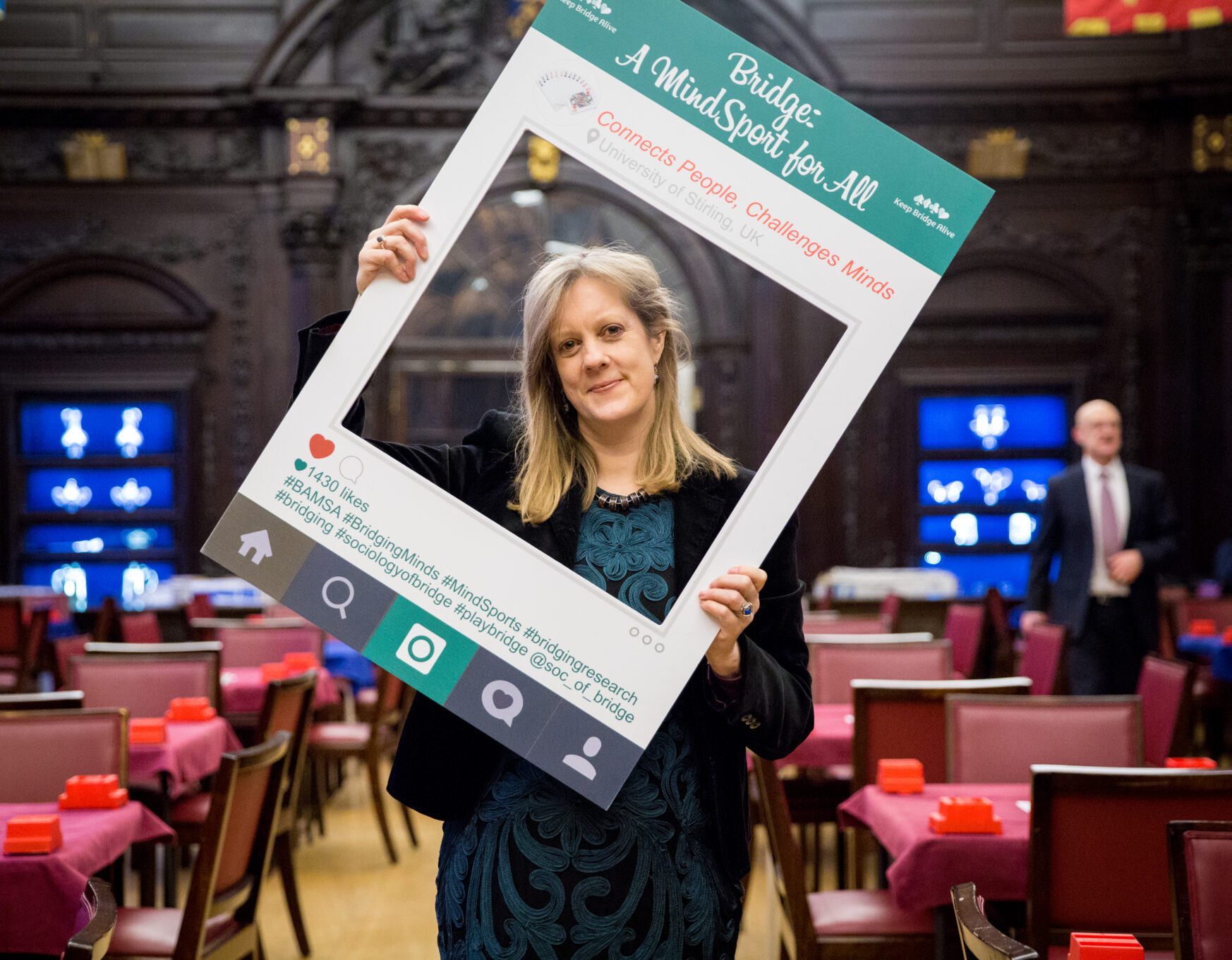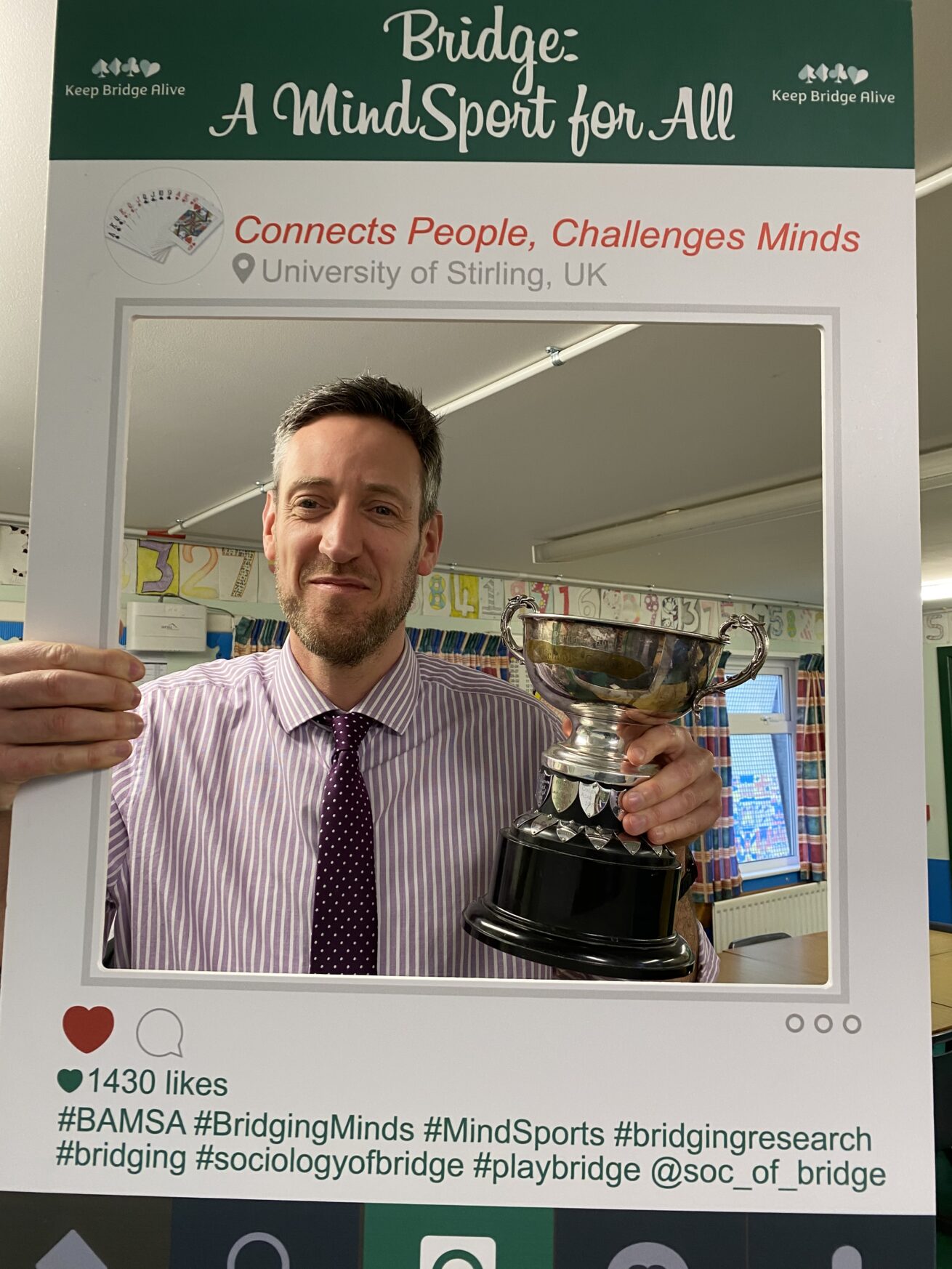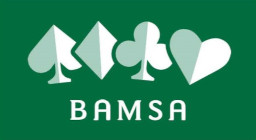

BAMSA has a new four-year project on bridge, youth and mindsport education, focusing on ways to tackle the declining numbers of bridge players by bringing in more younger players and getting bridge into schools in the U.S. and Europe. It combines academic research with practical outcomes, using international case studies to determine best practices and ways to grow the youth bridge community. The project currently has case studies starting in Ireland, England, Scotland, Denmark and Norway – countries leading the way with youth bridge. The project will start at the end of this year, focusing on collecting data for the first two years. The main research question is to explore the opportunities and challenges of teaching bridge in schools from the perspectives of pupils, schoolteachers, bridge teachers and parents.
“What the bridge world seems to want is evidence as to why schools should have bridge, why it’s good for kids and why kids should learn it,” explained Punch. “Rather than me guess, ask. Ask the successful schools who have run bridge programs: what persuaded you to do it; what worked for you; and now that you have it in the school, what now convinces you? Ask schoolteachers how they would persuade other teachers and kids to adopt a bridge program.”
Basically, going back to places where bridge programs have been successful and finding out from the people involved what worked best – and what didn’t. Some programs have tried bridge in the school curriculum, lunchtime or after school, as well as getting into schools to get kids signed up and then teaching on weekends.
“There are lots of different routes,” explained Punch, “so we are trying to map out a best practice guide of how to gain access, what are the most successful routes, how do you convince schools, teachers, parents and young people and how to develop promotional material for each of those groups using the results to develop resources.” Punch is looking for case studies in different countries, including the U.S., with an eye toward different social groups, children with Asperger’s syndrome and/or those who don’t fit in with conventional extracurricular activities.
Top Scottish player Samantha Punch is the founder of Bridge: A MindSport for All (BAMSA), a nonprofit organization formed to enable academics to carry out sociological research and to work collaboratively with bridge organizations. BAMSA has three key goals: working collaboratively with bridge organisations to transform the image of bridge; to encourage more people of all ages to play and to ensure the card game continues to thrive.
BAMSA has been undertaking academic research on various bridge projects (see www.bridgemindsport.org). In the research area of the BAMSA website, summaries are available for each of the nine papers published so far. The topics for these papers include motivations and rewards, emotions, partnership dynamics, gender and professional bridge. Punch has also produced a book based on the BAMSA interviews with top U.S. and European players, which won the International Bridge Press Association’s Book of the Year award. “Bridge at the Top: Behind the Screens” can be found online or ordered through bookstores.
Thanks to generous match-funding from the Levine Family Foundation, any donations to support this bridge and youth project will be doubled. If you would like to donate via the Bridge Crowdfunder page: www.crowdfunder.co.uk/p/u5c0e5e7810869.
Alternatively, you can donate through the University of Stirling website: www.stir.ac.uk/carddonate.
Scroll to the bottom of the page and choose single gift, this will direct you to the donation form where you can select “Bridge Research Project” as your designated cause.
Tax efficient giving for US donors: The University of Stirling is an approved institution with British Schools & Universities Foundation. You donate through their website stating that you wish the donation to go to the University of Stirling (the donation is then moved into the BAMSA budget): www.bsuf.org/donate
The new project aims to develop academic evidence that demonstrates the skills and wide-ranging benefits that bridge, as a mindsport, can offer young people. The study will investigate the benefits and challenges of teaching bridge in schools. The goal is to encourage schools to take bridge as seriously as chess, and mindsport education as seriously as physical education.
By donating, you enable BAMSA to conduct this work in the USA as well as Europe. The funding pays for the researchers to interview school teachers, bridge teachers, pupils and parents to explore what helps and hinders learning bridge. The funds are used to develop practical resources from the findings to enable growth of youth bridge communities in the USA and Europe.
If you would like further information on the project, contact Sam at [email protected] or visit: www.bridgemindsport.org/home/research/bridging-schools
This article by Amy Casanova first appeared in the ACBL Bridge Bulletin during New Orleans NABC March 2023.
